Discovering Malta’s Ancient History
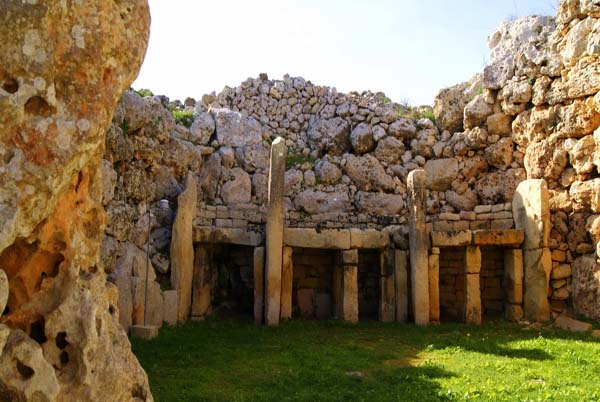
Malta’s ancient Temples are the oldest stone architecture built in the world and have all been recognised as UNESCO World Heritage Sites. Built between 3600 and 2500 BC, the Temples are older than both Stonehenge and the Great Pyramids!
Malta is also the site of the Hal Saflieni Hypogeum, another UNESCO World Heritage Site that is a three-level underground tomb complex, whose chambers have been carved to look like the above-ground temples.
This collection of ancient monuments is one of the most spectacular reasons to plan a visit to the island of Malta! See our suggested 7-day itinerary here.
Want to read more about Malta’s spectacular history? Find more here.
Ancient Malta’s Archaeological Treasures
Hagar Qim and Mnajdra Temples
These two temple complexes sit nearby one another, perched on a rocky hilltop plateau on the rugged southern coast of Malta overlooking the Mediterranean Sea. The attractive landscape remains most like the original setting than that found at other temples on the island.
The largest stone slab at this 5,000-year-old site weighs about 18,000kg. The small bowling-ball sized boulders scattered about the site were likely used to help roll the massive rocks into place.
Artefacts found here are now on display in Valletta’s National Museum of Archeology. You can see these artefacts that include small statuettes of round fertility figures and a decorated rock pillar with spiral ornamentation.
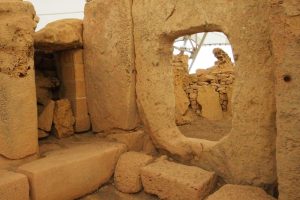
Malta, Hagar Qim
One of the Hagar Qim Temple’s chambers contains an elliptical hole that aligns with the Summer Solstice sunrise. On the first day of summer, sunlight passes through this hole and illuminates a stone slab inside. A truly magical site!
On our 7-day itinerary we secure tickets to the sought after Hagar Qim site that can book out months in advance.
The Mnajdra Temples include three different buildings and are in an isolated location not far from Hagar Qim with stunning sea views.
The South Temple is the oldest part, dating to around 3600 to 3200 BC. The doorway is flanked by two immense blocks of stone with small holes that align with the rays of the rising sun on the first day of each of the four seasons.
Hal Siflieni Hypogeum
The Hypogeum, whose name means underground in Greek, is a subterranean prehistoric burial site located in Paola, Malta and was discovered in 1902. It is a burial complex that was cut into solid rock between 3600 and 2500 BC.
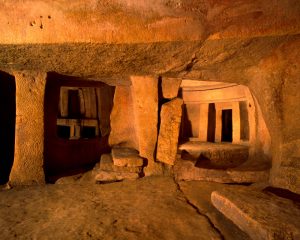
Malta, Hal Saflieni Hypogeum
The Hypogeum was built in three layers down into the earth, each level with multiple rooms and complete with beautiful carvings and paintings in red ochre. It once held about 7,000 bodies, which were placed here over the course of about 1,000 years. The most impressive room, the so-called ‘Holy of Holies’, is a copy of the above-ground temples but impressively carved out of the rock below ground. At this catacomb complex, religious burial rituals were performed.
Some of the artifacts found on site such as clay sculptures, stone bird figures and The Sleeping Lady, a rare prehistoric object that depicts a woman lying on a couch, are now displayed at the National Museum of Archeology.
Tarxien Temples
Discovered in 1914, the four Tarxien Temples are the largest and best-preserved Temples in Malta. The stone walls are decorated with intricate spiral patterns and animal figures. The largest collection of art is in the South Temple, including animal reliefs and a statue depicting a fertility goddess with large legs and a pleated skirt. The Tarxien Temples archaeological site is just a short distance from the Hal Saflieni Hypogeum. We’ve built this into our suggested 7-day Malta itinerary, view it here.
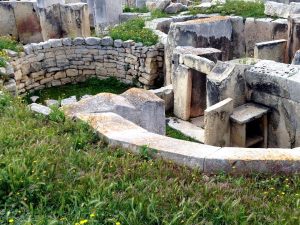
Ancient ruins in Malta, Tarxien Temple
Spectacular Temples on Gozo
Gozo is the second largest island in the Maltese archipelago and is home to the earliest Temples in the country.
Ggantija Temples
The Ggantija are the earliest of all Malta’s prehistoric Temples, consisting of two temples which date back to between 3600 and 3200 BC. Some of these huge stone blocks weigh over 50 tons! Legend has it that these Temples were built by giants, which led to the name Ggantija, meaning ‘Giant’s tower’.
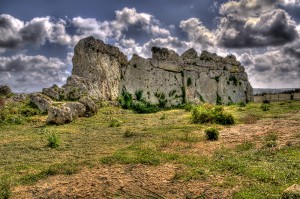
Ggantija Temples, Gozo Island
Animal bone remains discovered here seem to indicate communal rituals and feasting. Stone hearths show that fire was used, and several holes in the floor may have been for the pouring of liquid offerings.
Entrance to the Temples is from an Interpretation Center that displays significant finds from the site and gives visitors the chance to explore various aspects of Neolithic Period life. The center is also home to a selection of the most significant finds from the Temples.
You can see these impressive monuments up close as part of our Malta Highlights Tour.
Malta’s rich collection of ancient monuments, including its Temples and Hypogeum, are part of the world’s cultural treasures as recognized by UNESCO. There are unique architectural masterpieces built by a people with limited resources at their disposal. Visit these impressive structures and learn more about mankind’s ancient past on our Malta Tour!
Tags: Gozo, Hagar Qim, Hypogeum, Ggantija Temples, Tarxien Temples
